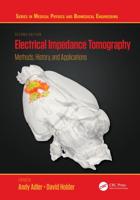Publisher's Synopsis
This book offers a comprehensive overview of the environmental challenges posed by emerging pollutants and the innovative strategies available for their management. Divided into 16 chapters, the book begins with an introduction to the origin and management of both inorganic and organic contaminants, offering a detailed examination of their sources and the potential risks they pose to ecosystems. It also explores current regulations and management practices aimed at mitigating their impact. In the following chapters, experts in the field cover topics such as conventional wastewater treatment methods for the removal of emerging pollutants, biotechnology-based strategies for the removal of emerging contaminants, microbial electro-deionization technologies, and algae-based bioremediation. Particular attention is given to specific remediation techniques, including phytomediated approaches, microbial fuel cells, and the novel application of microbial endophytes. Furthermore, the book explores the potential of nano-bioremediation and enzyme immobilization technologies, shedding light on their mechanism of interaction with nanomaterials and microbes for efficient treatment. Other chapters highlight the role of graphene-based nanocomposites, bio-based porous materials, and biosurfactants in the remediation of emerging pollutants, showcasing their unique capabilities and potential applications. In the final chapter of the book, readers will discover more about the impacts of emerging pollutants on environmental microbial communities and the consequential public health concerns that arise from their presence.
Given its breadth, this book is a valuable resource for environmental scientists, policymakers, and industry professionals seeking to mitigate the ecological risks associated with these contaminants.










